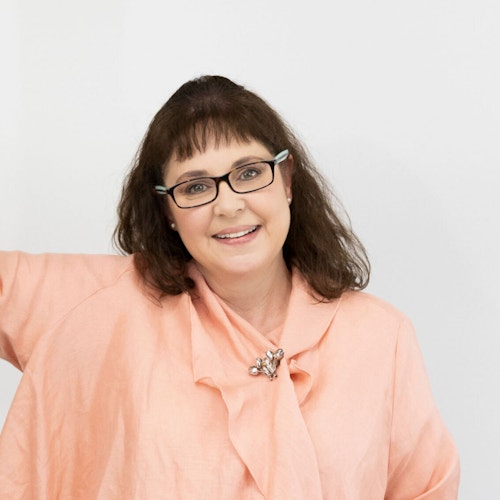
Simple steps to saving a life
Published 5:00am 13 September 2023

 Words by Jodie Powell
Words by Jodie Powell
Mark Booth doesn’t consider himself a hero – yet a decision he made several years ago changed the life of a complete stranger.
The City of Moreton Bay Div 2 Councillor signed on to the Australian Bone Marrow Registry after a conversation with his wife, Sally’s cousin, who had leukemia.
“He was diagnosed in 2013 and found a donor in India and then he went into remission,” Cr Booth says.
Speaking to Moreton Daily ahead of World Marrow Donor Day on September 16, Cr Booth says he was inspired to register as a donor and astounded by how simple signing up was.
“Becoming a donor was easier than I thought,” Cr Booth explains.
“You arrive (at the Blood Bank) and get the usual donation form and ask specifically to go on the Bone Marrow Registry.
“Instead of filling one to two tubes with blood you fill three and one for the Bone Marrow Registry - it took seven minutes and 42 seconds to complete.”
Five years on, and prospective donors can also register online and provide a sample using a home-delivered cheek swab.
More donors needed

Cr Booth was also surprised by how relatively straightforward the donation process was.
“People think you have to have surgery and have bone marrow taken, but the technology has advanced so much that more often than not you don’t have to have surgery.
“The hardest thing is on the day you have to sit still for eight hours with a big needle in your arm.”
Cr Booth says it’s rare for patients to match with relatives, which is why having more people registered is critical.
“In European countries it’s part of your National Service. Everyone has to go into the Army and onto the donor register.
“Theoretically you never hear again, but two years later, on December 21, 2018 I received a call advising I was a match for an Australian adult male who was receiving treatment for leukemia.”
Preparing to donate

Cr Booth completed a series of tests and had a 12-week wait to see how the patient’s chemotherapy treatment went.
“On March 13, 2019 I did a medical work-up and found out there were only about 30 non-related stem cell donors each year in Queensland. Most rely on a relative match or overseas donation.”
Cr Booth says while he was waiting for his test results, his recipient was undergoing treatment to destroy bone marrow to be ready for the new stem cells.
To prepare for the donation, Cr Booth injected himself with growth factor to stimulate stem cell production.
“The injecting wasn’t too bad, it was more the bone pain, because of the stimulation.
“The first of April was when I started prep with Filgrastim, which stimulates the bone marrow to produce stem cells and release them into the blood - that was the hardest, mentally, with fatigue, headache and bone pain.
|“That’s as bad as the side effects got, and it’s a drop in the ocean compared to what the recipient was going through.”|
Harvesting stem cells
Cr Booth returned to hospital for harvesting, during which his blood was cycled through a machine three times to collect the precious stem cells.
“They were aiming for three million stem cells and they harvested over 20 million,” Cr Booth says.
“In July of that year we reached the three-month post-harvest point and the register sent an update to say the patient had a very good response to my stem cells.
“The engrafting happened so quickly that he was discharged 25 days after transplant instead of the usual 100 days.
“You’re off the list for two years, tied to this person in case they need another donation.”
Cr Booth kept a record of his journey on his Facebook page and regularly reposts to raise awareness about what a difference registering to donate can make.
Educating others
“It’s not something people know about because they usually only find out if a relative gets blood cancer.
|“You do what you do for the other person - they don’t say you’re saving a life, they say you’re prolonging a life.|
“To me, everyone who gives blood should just do it. Donating is not scary and it’s not very painful.”
According to the Australian Bone Marrow Donor Registry, about 1000 Australian blood cancer patients need a donor each year, with about half matching with a relative.
The rest rely on volunteers – but the current pool of Australian donors only matches about 70 patients a year, and the remainder rely on finding a donor overseas through reciprocal arrangements between the Australian Blood Donor Registry and international agencies.
People aged 18-35 are eligible to register and the registry says young men have a big role to play.
“It is not a question of quality, but quantity. By being on average larger, men can give more stem cells,” the registry says.
Click here to find out more.
Related Stories
Top Stories

Info sessions for North Pine dam
Drop-in community sessions are being held over the next nine days for those wanting more information about Seqwater’s dam improvement program.


Popular Stories

Moreton Bay artists shine in 2024 Brisbane Portrait Prize
Four Moreton Bay artists are among the 64 finalists chosen from almost 600 entries in this year’s Brisbane Portrait Prize. See their works...

'Priority' given for Waraba plans
Waraba, formerly known as Caboolture West, will be the 36th Priority Development Area in Queensland, unlocking land for 30,000 new homes and an estimated 70,000 new residents.

Trai Fuller: ‘It’s always felt like home’
Praised by Wayne Bennett for his courageous style of play and loved by long-time Dolphins fans, Trai Fuller has locked in a two-year deal with the club he calls home. He tells us why it means so much to him













